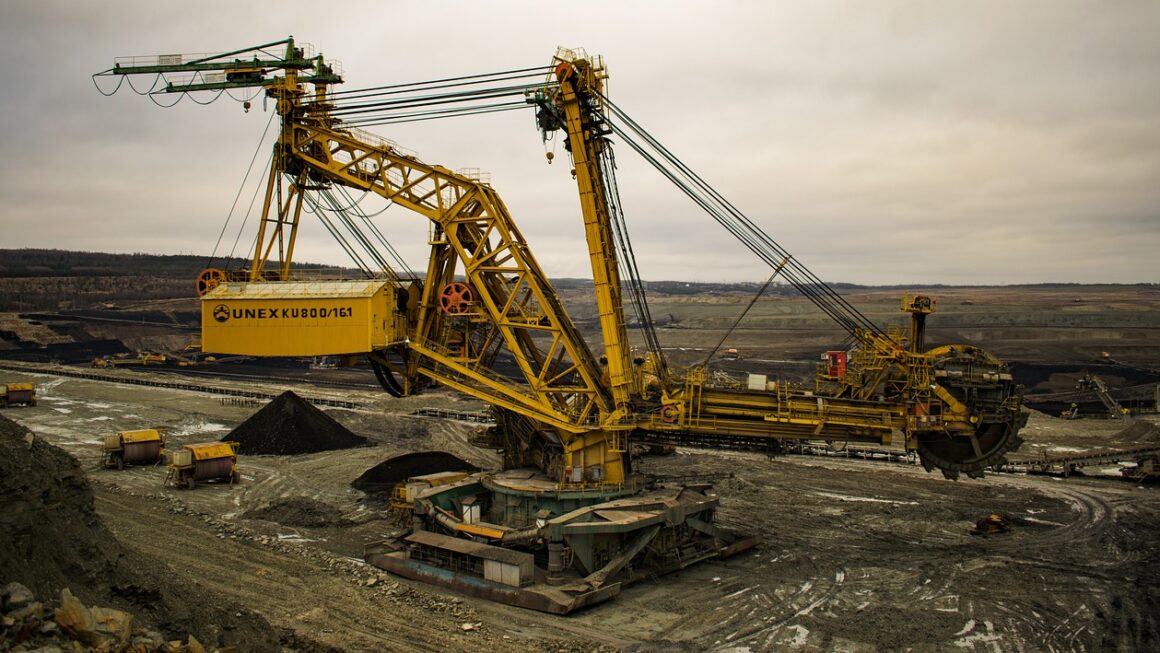Building your own cryptocurrency mining rig can be an exciting and potentially profitable venture. However, it’s not a simple plug-and-play operation. It requires careful planning, research, and a basic understanding of computer hardware and cryptocurrency mining. This guide will walk you through the key aspects of building and operating a mining rig, helping you navigate the process and maximize your chances of success in the world of crypto mining.
Understanding Mining Rigs
What is a Mining Rig?
A mining rig is a custom-built computer specifically designed to perform the computational tasks required for cryptocurrency mining. Unlike a general-purpose computer, a mining rig focuses on maximizing processing power for a particular algorithm, typically used to mine cryptocurrencies like Ethereum (ETH) or Bitcoin (BTC), although specialized ASICs (Application-Specific Integrated Circuits) are now more common for Bitcoin. These rigs typically consist of multiple high-performance graphics cards (GPUs), a motherboard, a power supply, and other essential components.
How Mining Rigs Work
Mining rigs solve complex mathematical problems to validate transactions and add new blocks to a cryptocurrency’s blockchain. This process, known as “proof-of-work” (PoW), requires significant computational power. By successfully solving these problems, miners are rewarded with newly minted cryptocurrency. The more powerful your mining rig, the higher your chances of solving these problems and earning rewards. Ethereum, for instance, used to rely heavily on GPU mining before transitioning to Proof-of-Stake. While ETH is no longer mined, other GPU-mineable coins remain profitable, depending on market conditions.
Mining Rig Components
- Graphics Cards (GPUs): The most crucial component, GPUs perform the bulk of the mining calculations. The number and type of GPUs significantly impact your mining performance (hash rate).
Example: NVIDIA GeForce RTX 3060, AMD Radeon RX 6700 XT
- Motherboard: Provides the platform for connecting all the components. Choose a motherboard with multiple PCIe slots to accommodate multiple GPUs.
Example: ASUS B250 Mining Expert (supports up to 12 GPUs)
- CPU: A basic CPU is sufficient as the GPU handles most of the processing. A low-end Intel Celeron or AMD Athlon processor is typically adequate.
- RAM: At least 4GB of RAM is recommended, but 8GB is preferable.
- Power Supply Unit (PSU): Provides power to all components. Choose a PSU with enough wattage to handle all your GPUs and other components. Overestimate rather than underestimate.
Example: Corsair HX1200 (1200W), EVGA SuperNOVA 1600 G+ (1600W)
- Storage: A small SSD (Solid State Drive) or HDD (Hard Disk Drive) is sufficient to install the operating system and mining software.
Example: 120GB SSD
- Risers: PCIe risers allow you to connect GPUs outside of the motherboard’s directly attached PCIe slots, providing better cooling and flexibility.
- Frame: A frame to hold all the components. You can buy a dedicated mining frame or build one yourself.
- Cooling: Adequate cooling is essential to prevent overheating and ensure stable operation. Consider fans, heatsinks, and even liquid cooling solutions.
Planning Your Mining Rig
Choosing a Cryptocurrency to Mine
The first step is to decide which cryptocurrency you want to mine. Consider factors like:
- Profitability: Calculate the potential revenue based on the current cryptocurrency price and mining difficulty. Use online mining calculators to estimate profitability.
- Algorithm: Determine the algorithm used by the cryptocurrency (e.g., Ethash, Equihash, SHA-256) as this affects the type of hardware you need.
- Hardware Requirements: Understand the specific hardware requirements for the chosen cryptocurrency. Some coins are better suited for GPU mining, while others require specialized ASICs.
- Mining Pool: Research reputable mining pools that offer stable payouts and low fees.
Budgeting and Cost Analysis
Carefully calculate the costs involved in building and operating a mining rig. This includes:
- Hardware Costs: GPUs, motherboard, CPU, RAM, PSU, storage, risers, frame, and cooling.
- Electricity Costs: Calculate your electricity consumption and the cost per kilowatt-hour (kWh) in your area. This is a major operating expense.
- Internet Costs: A stable internet connection is crucial for mining.
- Software Costs: Some mining software may require a license fee.
- Cooling Costs: While this can be an upfront cost, you may need to invest in additional fans or even liquid cooling to prevent overheating, especially with multiple high-end GPUs.
Selecting the Right Hardware
Choosing the right hardware is critical for maximizing your mining efficiency and profitability.
- GPUs: Research and select GPUs that offer a good balance of hash rate and power consumption. Compare different models based on their performance metrics and energy efficiency. Consider the used market for significant savings.
- Motherboard: Choose a motherboard with enough PCIe slots to accommodate your desired number of GPUs. Ensure it supports the type of GPUs you plan to use.
- PSU: Select a PSU with sufficient wattage to handle all your components, with some headroom for future expansion. A good rule of thumb is to add 20-30% extra wattage to your estimated power consumption.
- Cooling: Invest in adequate cooling solutions to prevent overheating and maintain stable operation. Consider factors like airflow, fan speed, and noise levels.
Building Your Mining Rig
Assembling the Hardware
Installing the Operating System and Mining Software
Optimizing Performance
- Overclocking: Overclocking your GPUs can increase their hash rate, but it also increases power consumption and heat generation. Experiment with different overclocking settings to find the optimal balance between performance and stability.
- Undervolting: Undervolting your GPUs can reduce their power consumption and heat generation without significantly impacting their hash rate.
- Cooling Optimization: Adjust fan speeds and airflow to optimize cooling performance. Consider using liquid cooling solutions for high-performance GPUs.
- Software Updates: Keep your operating system, drivers, and mining software up to date to ensure optimal performance and security.
Managing and Maintaining Your Mining Rig
Monitoring Performance
Regularly monitor the performance of your mining rig to identify potential issues and optimize efficiency.
- Hash Rate: Track the hash rate of your GPUs to ensure they are performing as expected.
- Temperature: Monitor the temperature of your GPUs and CPU to prevent overheating.
- Power Consumption: Track the power consumption of your rig to calculate your electricity costs and optimize energy efficiency.
- Mining Pool Statistics: Monitor your mining pool statistics to track your earnings and payouts.
Troubleshooting Common Issues
- Overheating: Ensure adequate cooling and airflow to prevent overheating.
- Driver Issues: Update or reinstall drivers to resolve compatibility issues.
- Software Crashes: Restart the mining software or operating system to resolve crashes.
- Hardware Failures: Replace faulty hardware components as needed.
Security Considerations
- Secure Your Wallet: Use a strong password and enable two-factor authentication to protect your cryptocurrency wallet.
- Firewall: Configure a firewall to protect your mining rig from unauthorized access.
- Antivirus Software: Install antivirus software to protect against malware and viruses.
- Regular Backups: Back up your wallet and configuration files regularly to prevent data loss.
Conclusion
Building and operating a mining rig requires careful planning, research, and ongoing maintenance. By understanding the key components, optimizing performance, and managing security risks, you can maximize your chances of success in the world of cryptocurrency mining. Remember to continuously monitor market trends and adjust your mining strategy accordingly to stay profitable. While the landscape is constantly evolving, a well-maintained and optimized mining rig can provide a consistent source of income.




